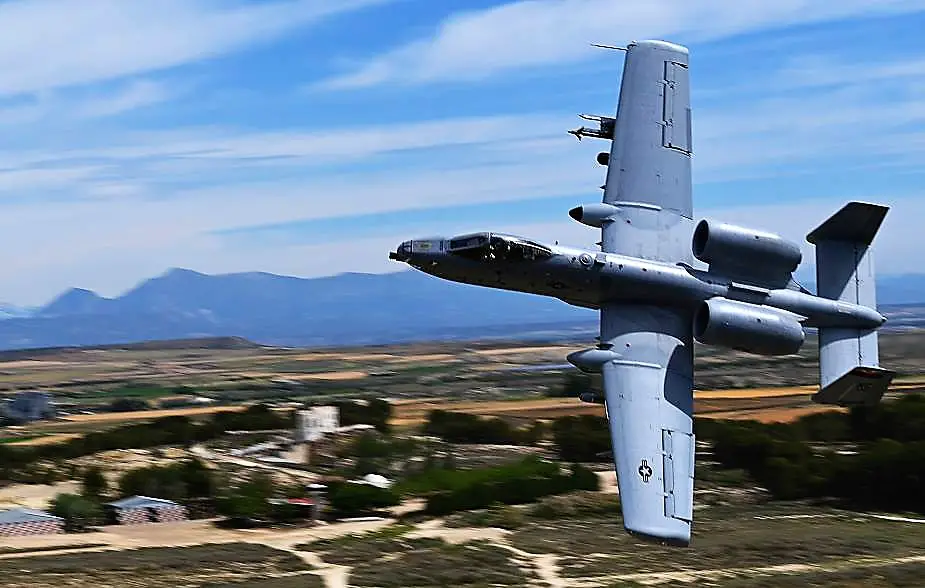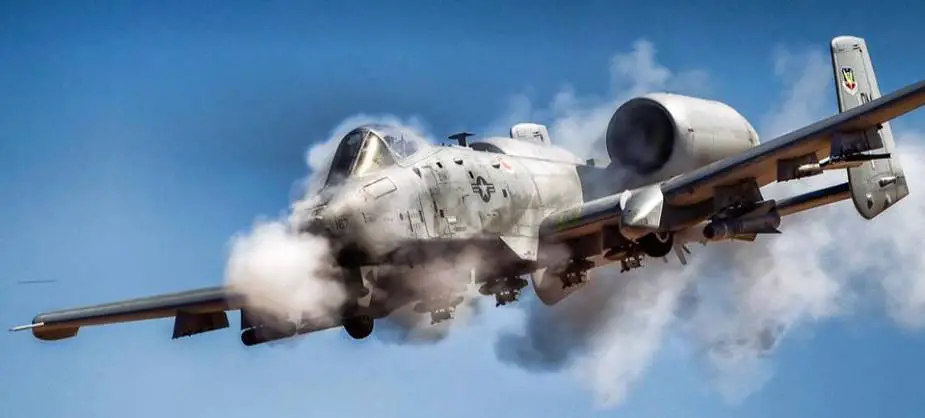Breaking news
What future for the formidable A-10 Thurderbolt II in its Close Air Support role?.
The A-10 Thunderbolt II, commonly known as the Warthog, was developed by Fairchild Republic in the 1970s, primarily for the U.S. Air Force. It serves a critical role as a close air support (CAS) and ground-attack aircraft, designed to provide vital assistance to ground forces during combat operations. But several times in a row, its future has been threatened from various sides.
Follow Air Recognition on Google News at this link
 A-10 Thunderbolt II of the 442nd Fighter Wing during Exercise Swift Response for Defender Europe 2023, near Zaragoza, May 8, 2023 (Picture source: U.S. Air Force)
A-10 Thunderbolt II of the 442nd Fighter Wing during Exercise Swift Response for Defender Europe 2023, near Zaragoza, May 8, 2023 (Picture source: U.S. Air Force)
Visually, the A-10 exhibits a distinct and robust appearance, characterized by its twin-engine, straight-wing configuration. It stands out with a high-mounted, straight tail featuring twin vertical stabilizers and a distinctive nose-mounted GAU-8/A Avenger 30mm rotary cannon.
In its role, the A-10 is tasked with engaging and neutralizing ground targets in close proximity to friendly forces. Additionally, it possesses the capability to perform forward air control (FAC) and combat search and rescue (CSAR) missions when required.
One of the aircraft's prominent features is the GAU-8/A Avenger 30mm cannon, capable of firing various ammunition types, including armor-piercing and high-explosive rounds. In addition to this formidable weapon, the A-10 can carry an assortment of other munitions, such as precision-guided bombs, rockets, and air-to-surface missiles.
The avionics systems on the A-10 are designed to support its operations in a low-altitude, close combat environment. These systems include a basic radar system, along with navigation and communication equipment.
The A-10's reputation for durability and survivability in combat is well-deserved. It is constructed to endure damage and remain operational, thanks to redundant systems and protective measures, including an armored cockpit and vital components.
While not known for exceptional speed or agility, the A-10 excels in its ability to loiter over a battlefield for extended periods, ensuring continuous support to ground troops. Its top speed and operational altitude are relatively modest when compared to more modern fighter aircraft.
Maintenance of the A-10 is simplified due to its straightforward airframe, facilitating maintenance and repairs even in austere conditions.
Throughout its history, the A-10 Thunderbolt II has seen extensive operational use by the USAF in various conflicts, including the Gulf War, Kosovo War, and the War on Terror. Its effectiveness in close air support roles has earned it a reputation as a valuable asset to ground forces.
However, it's essential to note some limitations of the A-10, including its vulnerability to modern air defense systems due to its lower speed and lack of advanced stealth features. Additionally, its air-to-air combat capabilities are limited.
 One of the A-10 Thunderbolt II's prominent features is its GAU-8/A Avenger 30mm cannon, capable of firing various ammunition types, including armor-piercing and high-explosive rounds, at a rate of fire of approximately 3,900 rounds per minute (Picture source: U.S. Air Force)
One of the A-10 Thunderbolt II's prominent features is its GAU-8/A Avenger 30mm cannon, capable of firing various ammunition types, including armor-piercing and high-explosive rounds, at a rate of fire of approximately 3,900 rounds per minute (Picture source: U.S. Air Force)
A-10’s future threatened
The discussions surrounding the potential replacement of the A-10 Thunderbolt II reflect the ongoing debate over the role of specialized close air support (CAS) aircraft in modern warfare. While the A-10 has proven its worth in supporting ground troops, it's essential for Congress to consider the evolving nature of conflicts and the need for adaptable and cost-effective solutions.
The A-10 has earned a legendary reputation for its durability and effectiveness in close air support missions, and any decision to replace it should not be taken lightly. Congress should thoroughly evaluate the capabilities and cost-effectiveness of potential replacements, ensuring that they can fulfill the critical role of supporting troops on the ground while also considering budget constraints and evolving military strategies.
Congressional threats to replace the A-10 highlight the complex balance between maintaining legacy platforms and investing in modern technology. It's crucial to recognize that while the A-10 has unique strengths, new threats and operational requirements may necessitate more advanced aircraft. The decision should be guided by a comprehensive assessment of current and future battlefield needs.
The A-10 replacement debate underscores the importance of a robust and transparent decision-making process. Congress should engage in a thorough analysis of the capabilities, costs, and operational requirements of potential replacements. Additionally, they should seek input from military experts and consider the perspectives of ground forces who rely on close air support.
The discussions regarding the A-10's replacement highlight the need for a balanced approach to modernizing the military's fleet. While the A-10 has been a workhorse in the CAS role, technology has evolved, and new threats have emerged. Congress should prioritize the development of aircraft that can effectively address current and future challenges while maintaining a commitment to supporting troops on the ground.
Congressional consideration of replacing the A-10 should include a thorough examination of the economic implications. The costs associated with developing, procuring, and maintaining new aircraft should be weighed against the potential benefits in terms of increased capabilities and mission flexibility. A well-informed decision-making process is essential to ensure responsible stewardship of taxpayer dollars.
The A-10 replacement debate highlights the need for a holistic approach to military modernization. Congress should focus not only on the aircraft itself but also on training, logistics, and support infrastructure to ensure a seamless transition. Additionally, they should consider the potential impact on the industrial base and the defense workforce when making decisions about replacing legacy platforms.
As Congress evaluates potential replacements for the A-10, it's crucial to maintain a long-term perspective. The chosen aircraft should not only meet current operational requirements but also have the flexibility to adapt to evolving threats and technologies. A thoughtful and strategic approach to modernization will ensure that the military remains prepared for the challenges of the future.



















